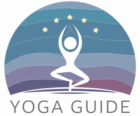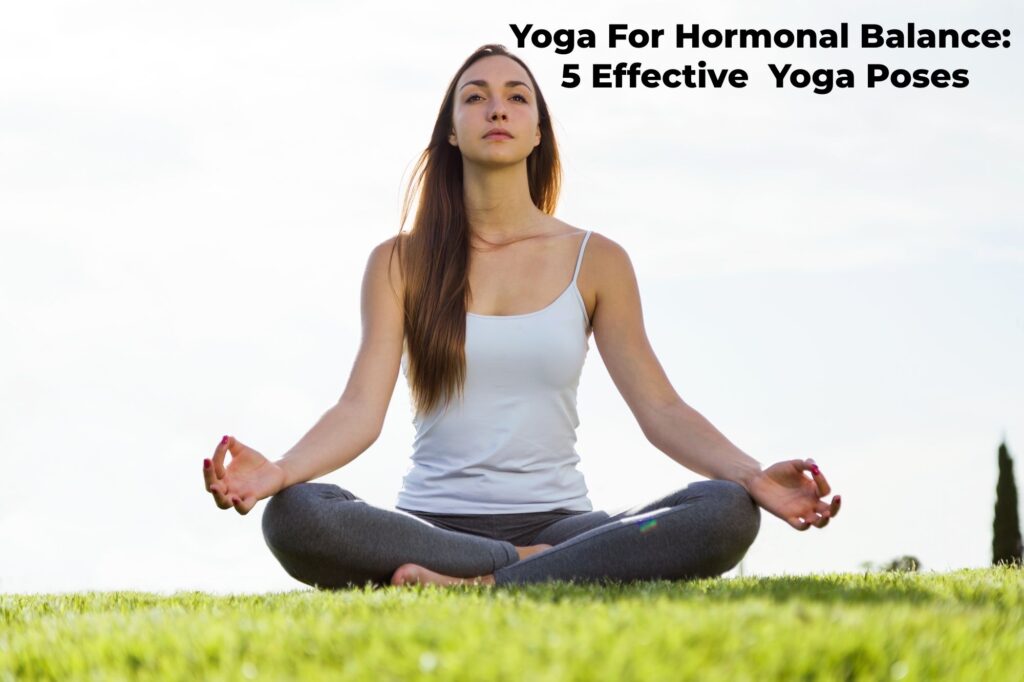Introduction
If you are suffering from hormonal imbalance then you should try some simple yet effective yoga exercises at home.
Yoga can be a game changer for managing hormonal balance. Certain poses and exercises can help ease menstrual cramps, reduce swelling, and promote overall health.
Practices such as deep breathing and meditation also contribute to menstrual health. Deep diaphragmatic breathing calms the nervous system, reducing stress and reducing menstrual symptoms.
Include these poses and exercises below in your routine. Begin in child’s pose and slowly progress through the sequence and end by resting in Shavasana. Regular exercise can improve health during menstruation.
A study published by the National Institutes of Health found that yoga therapy improved perimenopausal symptoms in all four areas. Hence the quality of life improved significantly compared to others.
Read More 7 Effective Yoga Asanas To Regulate Your Menstrual Cycle
Now let us take a detailed look at the listed 5 Yogasanas.
1. Cobra Pose
It stretches your stomach and chest and shoulders so it can strengthen your spine and soothe sciatica.
It works by helping muscle groups: hamstrings, gluteus maximus, deltoids, triceps and serratus anterior.and also helps in managing stress.
Follow the steps below to reap the maximum benefits of this asana.
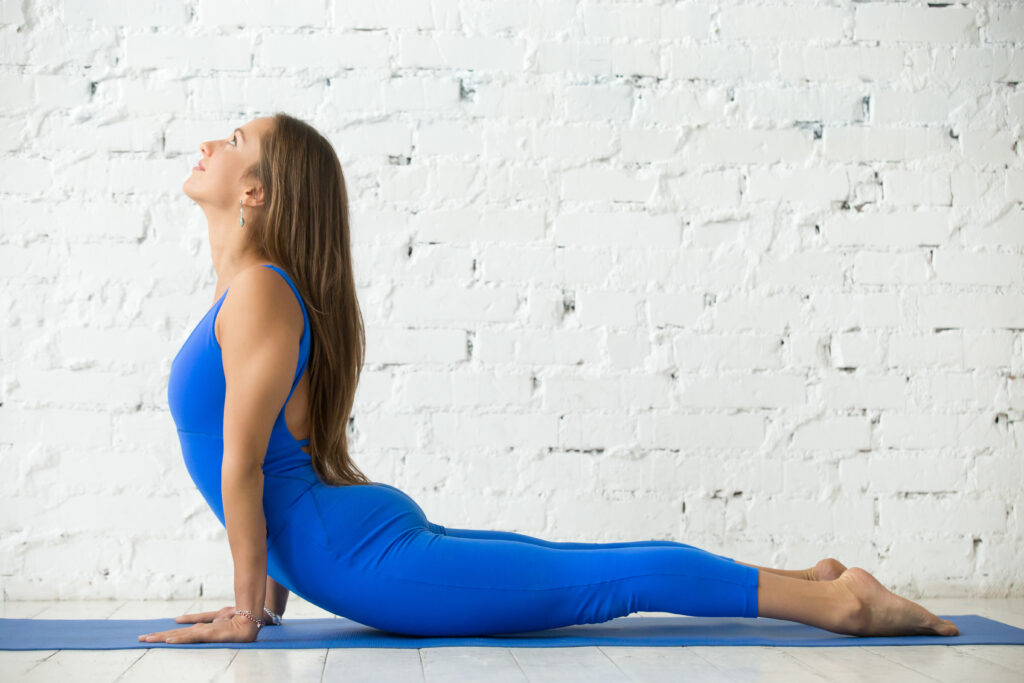
How to do
1. Lie on your stomach and extend your hands under your shoulders with fingers.
2. Do not pull your arms towards your chest and let your elbows go out to the side.
3. Gently lift your head and chest and shoulders by pressing down with your hands.
4. Lift up half way, half way or all the way up.
5. Bend your elbows slightly.
6. Drop your head back to deepen the pose.
7. Come back down to your mat and exhale.
8. Relax your hands by your sides and your head.
9. Gently rock your hips to one side to release tension.
Read More 5 Powerful Yoga Poses To Help Boost Your Fertility
2. Bridge Pose
Bridge pose calms the brain to regulate blood pressure and also reduces stress. It is beneficial in managing mild depression and is also good for abdominal organs, lungs, menstrual pain, fatigue, headache and anxiety.
Follow the steps below to reap the maximum benefits of this asana.
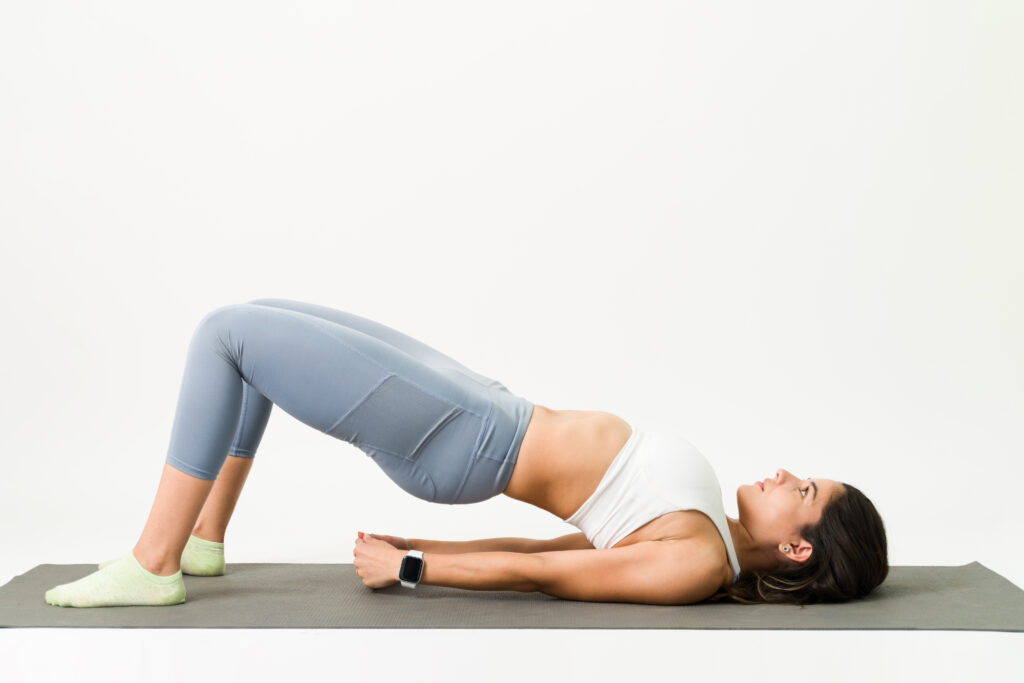
How to do
1.Lie on your back with your arms at your sides and bend your knees and place your feet flat on the floor near your hips.
2. Press into your legs as you lift your hips and torso to create a straight line from knees to hips.
3. Hold this pose for thirty seconds, then lower your hips to the floor.
3. Lotus Pose
Lotus pose has been proven to improve posture and is effective in prolonged sitting and computer work situations. It helps to relieve lower back pain and neck pain.
It helps to counteract slouching and kyphosis (abnormal curvature of the spine). And by strengthening your back muscles, the muscles that support your spine.
Follow the steps below to reap the maximum benefits of this asana.
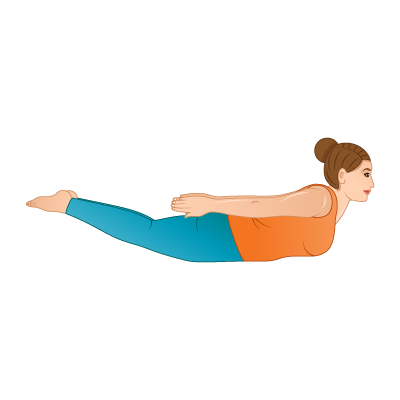
How to do
1. Place your palms together on your stomach with your hands behind your back.
2. Press down with all toes to activate your quadriceps, trying to curl your big toes straight back.
3. Rotate your inner thighs to widen your lower back.
4. Place your hands on the mat and lift your head and chest as well as your legs leading with your inner thighs,
5. Roll your shoulders back and up off the floor to lengthen the back of your neck and try to lift your sternum rather than lifting your chin.
6. Exhale gently while coming out of the pose.
Read More 5 Effective Yoga Poses For Thyroid
4. Camel pose
Camel pose helps to stretch the front body and involves the chest, abdomen and quadriceps. It helps to flush out toxins from the body.
Follow the steps below to reap the maximum benefits of this asana.
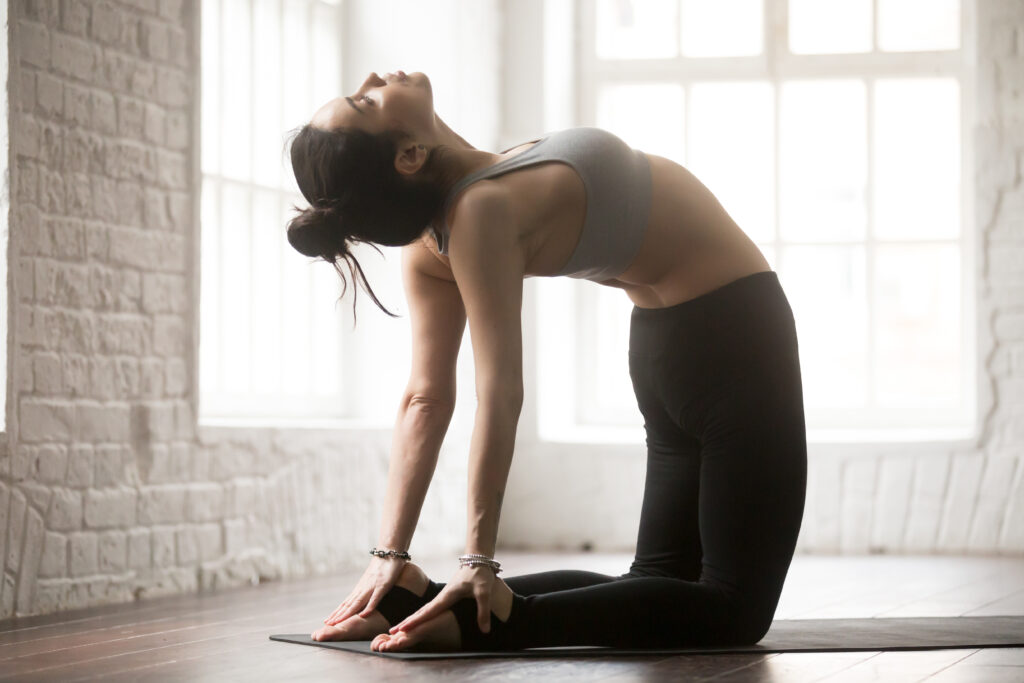
How to do
1. Bend your knees on the yoga mat and keep your hips and back straight on your knees. If you have knee pain, you can put padding underneath. You can use a folded blanket or mat for extra support.
2. As you raise your arms along your body, place your palms next to your rib cage and your elbows out and your other four fingers circle the rib cage in front and side and allow your thumbs to rest on the back of your ribs.
3. As your chest opens toward the ceiling, use your hands to quickly raise the bar cage.
4. Gently stretch the back of each hand to fill your hour. Keeping your chest steady while doing this, if you need more height to reach your heels, place your toes under them.
5. Keep your hips higher than your knees when leaning forward.
6. Let your head fall back if comfortable with your open. If it doesn’t fit your neck, tuck your chin.
7. Finally, bring your chin to your chest and your hands to your hips to exhale gently. As you gently lift your body into a straight kneeling position, engage your abdominal muscles and use your hands to support your lower back.
5. Child’s pose
You should sit on your knees in this post, which can be helpful with hips and back in child’s pose, relaxing and stretching them.
Follow the steps below to reap the maximum benefits of this asana.
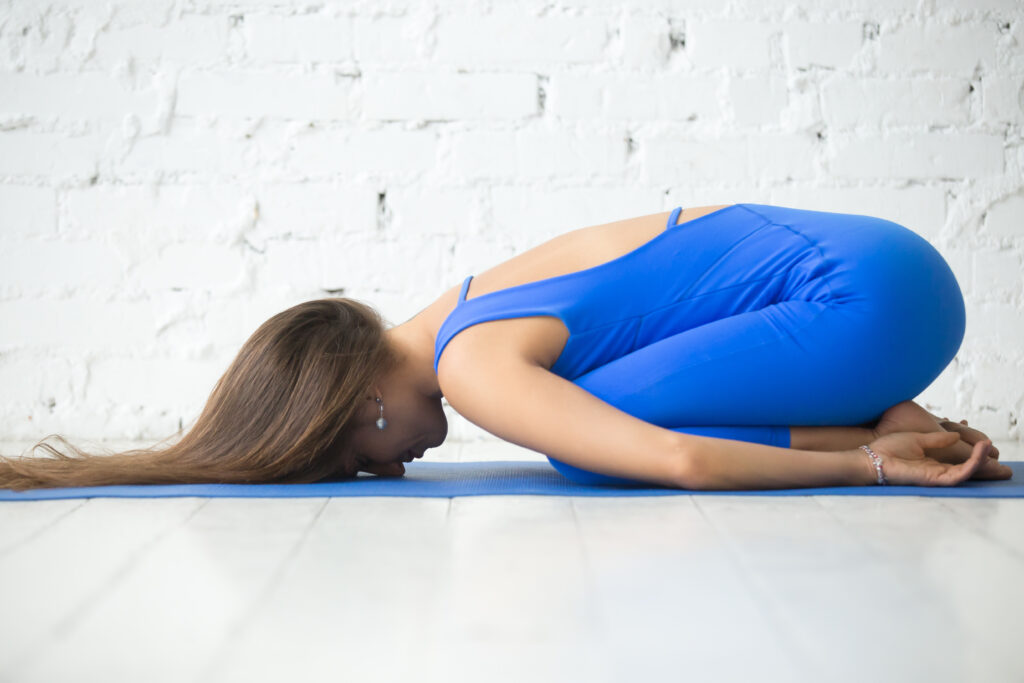
How to do
1. Place your hands on your knees on the mat.
2. Spread your knees as wide as your mat and place your toes on the floor touching your big toes.
3. Press your hips back and let your hips rest on the floor or just above your feet.
4.You can place your hands in front of you with your stomach resting between your thighs and your forehead on the floor or rest your forehead on them if that is more comfortable.
5. If you are not stacking your arms, spread your arms out in front of you, facing the floor or facing away from it.
6. While you are in this pose, make sure that your exhalation is soft with all your attention.
conclusion
By practicing the five yoga poses we have told you in this session, you can reduce the pain of hormonal imbalance. And certain poses and exercises can help ease menstrual cramps, reduce swelling, and promote overall health. Practices such as deep breathing and meditation also contribute to menstrual health. Deep diaphragmatic breathing calms the nervous system, reducing stress and reducing menstrual symptoms.
